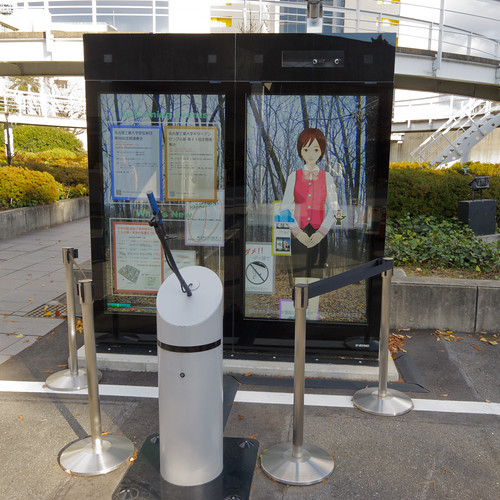Small businesses don’t have the budget or resources that large companies do, which means they need to get creative and spread every dollar as thin as possible. Most small businesses do not have the budget for tactics like television or radio ads, and most businesses large and small know that direct mail doesn’t have a high success rate.
So what does a small business do when they need to market themselves effectively? They turn to signage.
Signage is a tried and true marketing tactic, and it’s especially great for small businesses that are just starting out. Not only is it extremely budget friendly, but it’s also one of the most effective and reliable tactics on the market today.

Image by Haruhiko Okumura / Flickr
But like any marketing tactic, signage is only effective and reliable when it is used correctly. As a small business thinking about using signage, the following are tips to help ensure you get the most out of your signage strategy.
1. Choose the right location.
As a small business, you want to ensure that your target market is seeing your signage, which means you need to do your research and find the best location for your signage. Make sure that you’re choosing a high traffic area that contains a good majority of your target audience. This way, your company name and message will be seen by those who will use your products and services, giving you a bigger opportunity to increase sales.
2. Keep it simple.
Your messaging needs to be clear and succinct in order to have the best impact. As a small business, you want people to know who you are and what you do, and if the messaging on your signage is not clear, it will only confuse your potential customers.
It’s also a great idea to make sure that your company name and contact info are easily seen on the signage. If you create a great sign but forget to include this information, nobody will know that it’s your company offering these products or services. Your contact information, especially website or social media addresses, are a great way to generate traffic to your online campaigns to seal the deal.
3. Capture attention.
We just told you to keep your messaging simple, but you still need to create a great sign that will capture your customers’ attention. If you stick with bland colors and boring fonts, your signage will get lost in its surroundings. When you use fun colors, exciting fonts or even a great headline, your signage will get more visibility and be remembered more easily.
4. Don’t overlook mobile.
If you can’t find the one great location to place your signage (or if you have a big enough budget that allows you to have multiple signs), opt to use mobile signage. People are driving or stuck in traffic everyday, and if you place signs on your vehicles, you will easily reach these people.
As a business, you can create signage and place it on one of your own vehicles, or there are companies out there that rent ad space on vehicles and their sole purpose is to drive around large towns all day promoting your sign.
5. Prepare for trial and error.
Signage is one of those tactics that you may have to play around with before you hit the nail on the head. If you place signage in one location and you don’t see a great return, place your sign somewhere new and see how it works out in this location. You may have to place your signage in a few different locations before you find the one that works the best, but thanks to its versatility, this can easily be done without spending extra money.
The use of signage is a great marketing tactic for small businesses, and when you implement the signage with these tips, you’ll find more success.
About the Author: M.P Brown loves providing advice to small business owners.

